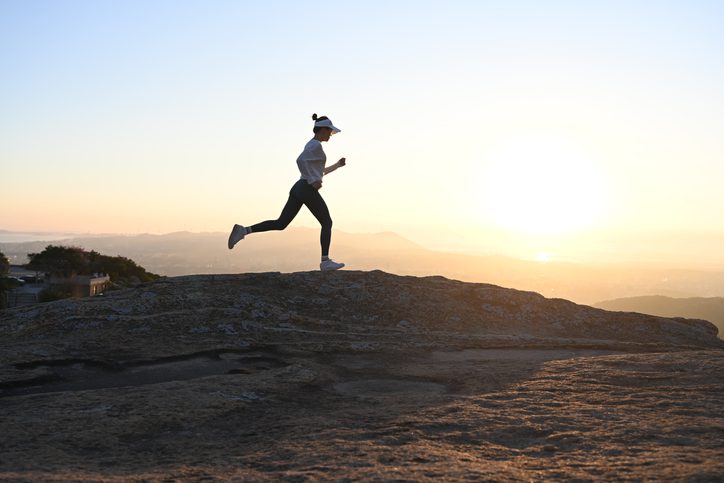Can tracking HRV make you a better runner?
If you're curious about heart rate variability and how to use it, look no further

Heart rate variability (HRV) is not just a fancy tech term; it just might be the secret sauce to optimizing your runs and enhancing your overall performance. While it can be overwhelming to see yet another running performance metric, HRV is a relatively simple way to gain valuable insights into your training. Here’s what you need to know and how to get started.

Heart rate variability decoded
The concept of HRV is simple: it measures the variation in time between heartbeats. But why should you care about the intervals between your heartbeats? That variability is like a sneak peek into your body’s autonomic nervous system, revealing whether you’re in fight-or-flight mode (stressed) or rest-and-digest mode (relaxed).
Here’s the magic—a higher HRV (i.e., more variation in the time between heartbeats) indicates your body is better equipped to handle stress and adapt to the demands of your training. By contrast, a lower HRV (i.e., the time between heartbeats is more uniform) may signal fatigue, overtraining or illness, urging you to take it easy. It may sound counterintuitive, but think of it as your body’s way of either waving a caution flag or giving you the green light for that ambitious run.

Why try it?
Imagine having a personal coach analyzing your body’s readiness for each run—HRV does that job for you. It’s your backstage pass to understanding how well you’ve recovered from the previous day’s workout and whether you’re ready to conquer the track, or whether you actually need a well-deserved rest day.
By harnessing the power of HRV, you can fine-tune your training plan, preventing burnout and injuries: it’s not about pushing harder; it’s about training smarter. “Measuring our resting heart rate and HRV first thing in the morning or during the night can provide us with a useful indication of our body’s stress response,” says Dr Marco Altini, an ultrarunner, scientist and specialist in HRV, said in a recent article in the Guardian.
how I use HRV4T data
– consistent measurements over multiple months (same time, same place, same body position (seated)
– look at long term (30+ day) trends & short term (if multiple consecutive days of bad recovery)
– remember this = life + training stressh/t @altini_marco pic.twitter.com/5uHbrDH5Pv
— gcs (@35gcs) January 22, 2024
This might seem fairly similar to heart rate training, and you’d be correct in that both involve monitoring heart-related metrics; the two tools can be used to complement one another. HRV provides a more nuanced window into the autonomic nervous system (which controls involuntary bodily functions) when it tracks variability. It can offer more personalized insights into how well your body has recovered, and is highly responsive to daily fluctuations, capturing the body’s readiness to perform on a given day.
How to get started
Here’s your roadmap to using HRV as a tool to boost your running performance.
- Pick your device: Numerous fitness trackers and smartwatches now come equipped with HRV monitoring capabilities. Choose one that suits your style and budget; alternatively, you can track HRV using the camera on your phone with an HRV app of your choice. Camera HRV uses a technique called photoplethysmography (PPG for short), which detects changes in blood volume during a cardiac cycle, by illuminating the skin and measuring changes in light absorption.
- Morning ritual: Measure your HRV at the same time each morning, ideally right after waking up. Consistency is key to accurate readings. If you’re a real enthusiast, try measuring first thing in the morning as well as before you go to bed at night.
- Stay relaxed: To get an accurate snapshot of your body’s baseline, try to relax during the measurement. Sit or lie down, breathe naturally, and let the device work its magic.
- Track trends: Over time, you’ll notice patterns and trends in your HRV readings. Use this valuable data to adapt your training plan—push harder on green days and take it easy when the caution flag is waving.
- Listen to your body: HRV is your ally, not a taskmaster. If it signals a low score, don’t hesitate to adjust your workout intensity or schedule a rest day.

